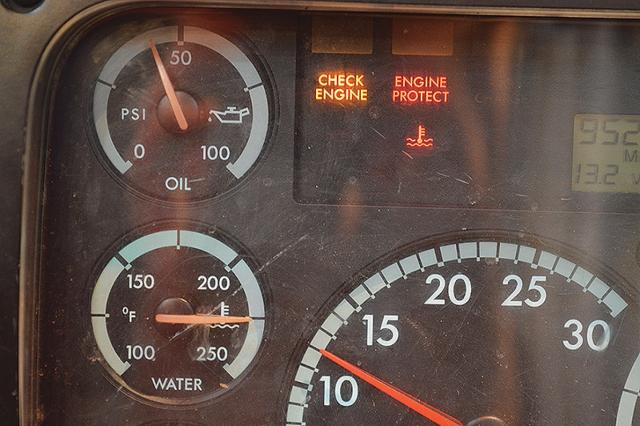Going from a DDEC III to DDEC IV ECM? Do Yourself A Favor And Verify Your Temperature Sensor Readings

When I test and repair DDEC III and DDEC IV ecms I use a specialized testing bench to create a simulated environment. I feed the ECM signals that would normally come from the pressure and temperature sensors on the engine so I can watch the DDEC run as if it were on an engine. It’s no secret that there are temperature sensor and pressure sensor differences between the sensor groups used on older Series 60 engines and newer Series 60 engines. A correction factor for each sensor is programmed into the DDEC to correct for the different sensor generations. A very common oversight occurs when DDEC ECMs are replaced and inexperienced or otherwise unaware DDEC programmers configure or uprate that DDEC incorrectly. When Detroit programs are copied from one truck to another sensor correction factors are also copied from one truck to another.
This sensor-program mismatch can lead to all sorts of issues. One big problem involves the coolant temperature and the engine fan. Running a DDEC with the wrong temperature sensor calibration can cause the engine fan clutch to engage before the engine is fully warmed up causing a loss of performance and fuel mileage or fail to engage when temperatures go too high causing the engine to overheat. I’ve written about this before but lately I’ve been seeing more and more DDEC IV to DDEC III compatibility programs not compensating for temperature sensor differences.
When should you worry about this problem? We’ll, let’s say you have a 1996 Series 60 12.7 GK60. This engine came with a DDEC III from the factory. If your truck has an ECM controlled fan engagement temperature due to high coolant is 208 degrees Fahrenheit and disengagement temperature is 195 degrees. If you have an ECM failure and get a replacement from Freightliner or Detroit they will set you up with a DDEC IV with a special program calibrated specifically for older GK60 Series 60 sensors, injectors and camshafts. If they screw up and don’t compensate for your sensors or you buy a DDEC IV off the internet with the wrong program your DDEC will have the wrong sensor calibration numbers in it. Now it’s garbage in garbage out. Any J1708/J1939 based dash gauges will be reading wrong and your ECM controlled fan, timing, and all engine protection systems are now getting bad information.
Now Imagine you’ve replaced your DDEC III with a DDEC IV and you’re pulling a hill and watching your water temp gauge. The DDEC is reporting 190 degrees to that gauge and the temperature is slowly climbing a degree or two at a time before to the fan engages at 208. Seconds after the fan clutch locks up the temperature shoots to 255. The first time that happens you might think your engine overheated because you weren’t paying attention. After a while you might think something is wrong with your engine or your coolant system.
The reality is when your DDEC IV reads the signal from your old DDEC III coolant temp sensor it reads 200 degrees but if your old DDEC III was reading that same signal it would read 224 degrees. Unless you have an OEM side auxiliary fan switch actual fan clutch engagement temperature is now 233 degrees. When in doubt verify engine temperature by pointing an infrared thermometer right at the sensor. Make sure your DDEC agrees.
Between all the gliders out there running DDEC III sensors and pre-1997 Series 60s running DDEC IVs I can’t help but to wonder how many Series 60 engines bit the dust because of this problem.
Written by Fernando DeMoura; Diesel Control Service LLC.; www.dieselcontrolservice.com Phone 412-327-9400
